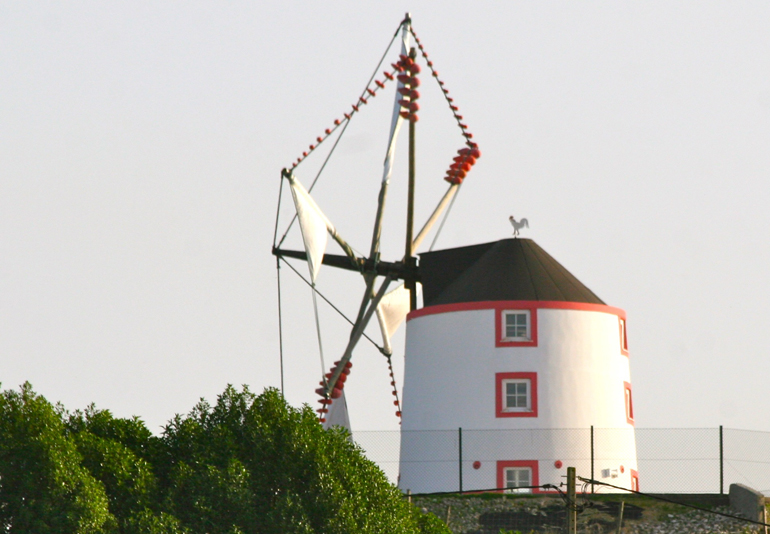The Valongo Mill

According to the village elderly people, the mill of “casal do val longo” produced its first sack of flour in the year 1898.
Almost forty years later, in 1937, the mill underwent its first renewal, as it is certified by a main girder of the second floor.
After many years of work, a very strong gust of wind and its sudden change of direction, overtook the miller who did not have the time to lower the sails nor to change the mast orientation.
 That is how, in 1974, the mill stopped working and soon was left to a state of neglect. The high cost of a restoration, and the spread of industrial mills, decreed its death.
That is how, in 1974, the mill stopped working and soon was left to a state of neglect. The high cost of a restoration, and the spread of industrial mills, decreed its death.
Only ruins were there when, in 1980, I got to see the mill. Weeds were growing on what was left of the roof. And the walls, in spite of being very thick – 1.60 metre at the base – were threatening to collapse. But what an exceptional spot, what a view!
Like Don Quichote, I plunged into the adventure, first of all to buy the ruins, then to proceed to restoration. Should I have the gift of Richard Hewitt, I would also write a book on such a crazy, endeavouring adventure.

A windmill with no mast and no yards, is not a windmill. It was not so easy for me to spot a carpenter still acquainted with this type of construction. What an extraordinary work: no nails, just wooden pegs, no electric devices, just good old tools handled with love and skill.

The ocean is a few hundred metres away, and the mill is anchored to the highest hill of the area. Can you fancy the weather conditions it has to face!
An adequate treatment was then necessary, and it took several days, during which the villagers could not believe their eyes: the white mill had turned into a black mill!

And, instead of letting the weeds grow free around the mill, or to surround it with gravel, nothing better than a “calçada a portuguesa”.
Today, after so many vicissitudes, the mill waits for you and will welcome you in the best possible conditions. If you like nature and space, you will love to be there.

“A Cottage in Portugal” by Richard Hewitt.
A true story on the joys and frustrations of an American couple living in Portugal: delightful, and a great fun.



